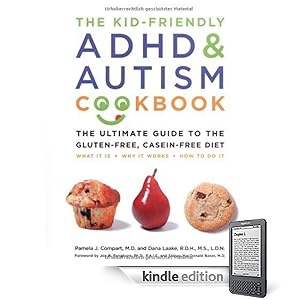Look at Things From the Viewpoint of Your Hyperactive Child:
As challenging as it is to be with a hyperactive child, imagine how frustrated your youngster must feel at his inability to calm and soothe himself. We all know a relaxed, alert state of serenity is a preferable human experience to have. Reports have shown that your state of mind is an influential factor in one’s health; with a serene, calm state of mind, we receive our most innovative ideas and deepest insights. Along with this, the greater we experience this state to be, the more we can achieve with it. In the following paragraphs, you’ll learn three important approaches to help your ADHD, ADD or hyperactive child achieve relaxed alertness, so hyperactivity can eventually fall away.
Quick Calming: Approaches to Calm & Soothe a Hyperactive Child
1. Relaxation is probably the most effective way to calm the body. Teach the kids to adopt deep breaths (in through the nose, out through the mouth) when they will feel frustrated and spinning out of control. *Parents, you decide to do this too!
2. Draw a warm salt bath or bubble bath to completely clear away the hyperactive child’s stresses of the day.
3. Take your hyperactive child for a walk or send them through the neighborhood independently if it is safe enough. Walking will burn excess energy, and the repetitive thump, thump, thump of feet hitting the pavement brings your head into focus.
4. Give your hyperactive child a mini-massage. Touch is extremely important to Attention Deficit Hyperactivity Disorder children. Massaging their temples, giving a shoulder rub, or lightly running your fingers through their hair can soothe kids quickly.
5. Build a “Boredom Box” that provides creative outlets for your hyperactive child. Fill this box or plastic storage bin with coloring books, paint sets, crossword puzzles, modeling clay, jewelry creation kits and also other artistic areas of interest. Hyperactive children bore easily and their fast spinning minds need extra stimulation. Hyperactive children will draw from their own devices and you don’t want them doing that. Better for them to paint or do something creative that is focused — then they’ll be less likely to spin out of control.
These quick-fix calming techniques work to sooth the hyperactivity in children whenever they already became too stressed or active. Additionally , there are techniques that parents can show their hyperactive children to assist them find the “stuff” out before it grows and explodes.
1. Produce a Calming Home Environment:
ADD , ADHD, Hyperactive Disorder children have a problem remaining calm inside of a hectic environment. Clearing the clutter and taking a “less is more” method of decorating is often effective in reducing the sensory overload of ADD , ADHD, and hyperactive children. The eye Deficit Hyperactive Disorder child’s bedroom, in particular, should be unencumbered with clutter. Use plastic bins to organize, and store all of the precious little plastic treasures (that we adults commonly make reference to as “junk”) and small toys. Open the curtains up to give natural lighting. Keep posters and wall hangings to a minimum. Paint the newborn’s bedroom in calming muted colors rather than bright primary colors. If you are a musician in your home, choose soft “elevator music” or classical music, as opposed to rock. Try to avoid loud clatters and noises when your Attention Deficit Hyperactivity Disorder child is at home.
2. Consume a Routine:
All children thrive in homes offering routines, consistency and structure. Attention Deficit and hyperactive children especially need structure and schedules to feel secure inside their surroundings. *For these children, an even more “military” way of routine should serve to increase results. Thus, getting up, eating meals, doing homework, and bed times should all occur at about the same time every day, with few surprises to upset your child.
3. The Place to Wind Down:
If at all possible, discover a space in your house to designate as a relaxation space. It doesn’t have to be a considerable space but it really needs to be away from the high activity areas. This little corner (or possibly element of a walk-in closet) may have a beanbag chair and a few books, coloring books or other quiet time activities. Encourage the child to attend this space if they become angry or uncontrolled, but never let this be a place of punishment. This special spot in your home is usually a positive place where they could head over to settle down, work things out or maybe chill out. This little spot is not only just for your hyperactive children at home. I know of one mom who uses the relaxation corner of her house more often than her children.
4. Journaling:
For your child that’s of sufficient age to write, journaling is a helpful way to untangle frazzled minds and “work things out”. This technique allows hyperactive children to spill their internal stresses outside of themselves, and onto paper. Establish a daily practice of helping your child write a page or two, based on what their ages are, about something which comes to mind. Afterwards, they crumple the paper up and can throw those stresses away. They could write “I hate school, your pet just drooled, the newborn’s crying is driving me crazy…” – whatever comes to mind. In the end, they will feel better.
They’re able to write a hate letter towards the perfect girl who sits to their rear in math class — as well as to the bus driver who has kicked them off of the bus. They could even write a letter about you, to get the frustration out, or write a letter to the friend who disappointed them. Then rumple or tear the paper up and dump it. These private internal system is not for you personally or anybody to read, ever. Please respect their privacy and make sure they know they could write anything down, without fear of reprisal.
Getting a Mini-Vacation with Guided Imagery:
Guided imagery is a second calming technique which will bring some children out of the moment, and a long way away from their problems to a peaceful place. Remember Happy Gilmore finding his “Happy Place”? Guided imagery can be like this. With soft, soothing music playing, ask your child to close his eyes and perform a few deep breaths. Walk him down an imaginary path into quiet woods, through prairies and gardens, or over a beach in the warm sunshine.
Use as many descriptive words as possible for your journey, and incorporate the five senses for maximum effect. With your kids and the ocean, is it possible to smell the brine and hear the waves gently lapping around the shoreline? Do you taste the goodness in the ice cream cone you bought at the beach? Consider the palms at the beach — could you see them swaying in the breeze? During this little trip, say phrases like, “You feel very relaxed,” “The warm sun on your face enables you to feel so happy and peaceful.” You should have a script prepared at the outset which will help you walk them through their journey.
Guided imagery is a powerful relaxation tool for hyperactive children that pulls their focus toward positive thoughts, all the while encouraging creativity in your child. You can check out ADHD books on this technique in your local library, in order for you to bone up on the subject.
Diet For ADHD
Some parents know that reducing or eliminating sugar with the diet goes further in calming the hyperactive child. If your kid is usually a finicky eater, you simply must supplement this diet to be certain your ADD , ADHD or hyperactive child has the fuels meant for his body to operate well.
Resourceful Books: Parenting Children with ADHD – 10 Lessons Medicine Cannot Teach
Diet For ADHD: Diet For ADHD Children
ADHD and Food: Kid-Friendly ADHD Cookbook (Rated 4 1/2 Stars at Amazon by 62 reviewers)
*Please be aware that the owner of this site can make a commission



